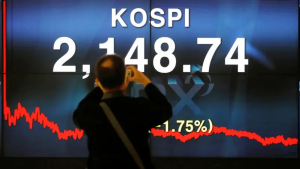Banks in the Middle East and North Africa (MENA) region posted a 30% year-on-year surge in their earnings in the first six months of the year, backed by solid fiscal conditions, credit demand, and government investments, according to a new report by EY.
Net assets and returns on equity climbed by 12.2% and 6.2% year-on-year, respectively, according to EY. The net interest margin, operating income, and total deposits rose by 0.2%, 18.8%, and 6.1%, respectively, for the January-June period.
Loan-to-deposit ratio (LDR) grew by 5.43% year-on-year in the first half of 2023.
The total banking market in the MENA region is projected to reach $2.8 trillion this year. It is also set to be one of the fastest-growing markets in the world, with a compound annual growth rate (CAGR) of 9.8% from 2020 to 2023.
“The outlook for the GCC region has been strengthened by strong oil prices and the related improvement in non-oil activity, which has also supported the credit demand in the region,” the report said. “Regulatory reforms, such as the introduction of Basel IV, are expected to have a positive impact on the sector,” it added. Surprising fact The UAE, Saudi Arabia, Qatar, Kuwait, and Egypt represent more than 70% of the total market in 2023, the EY report showed.
The top five GCC banks—Saudi National Bank (SNB), Saudi’s Al Rajhi Bank, Qatar’s QNB Group, UAE’s First Abu Dhabi Bank (FAB), and Emirates NBD—together reported a net profit of $20.7 billion in 2022.
The World Bank has cut its growth projections for economies in the Middle East and North (MENA) region to 1.9% in 2023 from 6% last year, hit by oil production cuts, tight global financial conditions, and high inflation.
Only half of the MENA economies are expected to regain their pre-COVID-19 gross domestic product (GDP) per capita levels by the end of 2023.
In contrast, all other GCC countries are projected to see a decline in their real GDP in 2023, albeit avoiding a contraction. The UAE’s real GDP growth for 2023 is forecasted at 3.4%, Qatar at 2.8%, Bahrain at 2.8%, Kuwait at 0.8%, and Oman at 1.4%. For 2024, a rebound is anticipated in all GCC countries except Qatar.











